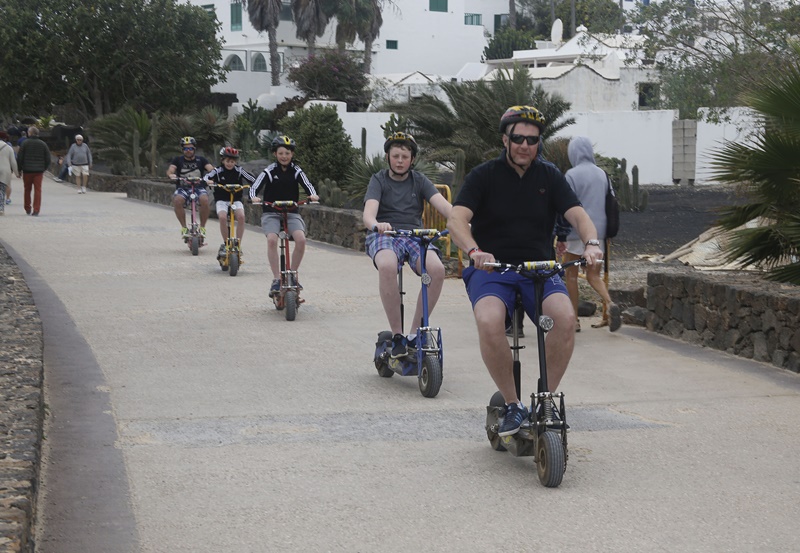The City Council of Teguise is in the process of carrying out a regulation to order the traffic of vehicles and people on urban roads to be approved by the local entities that Teguise will exercise within the limits established by the State legislation and regulations. Autonomous communities. The manifestation of this competition in terms of circulation goes through the elaboration of an ordinance that, in a systematic way, regulates the aspects related to the circulation within the municipality of Teguise before the proliferation of personal mobility vehicles (VMP) in urban roads.
“Since they are already a reality in our streets, the objective of this ordinance is the regulation of the uses of urban roads by the VMP and the cycles of more than two wheels, in order to favor their integration in the field of urban traffic for the good of citizen coexistence and its security and in guarantee of universal accessibility and the reconciliation of personal, family and work life in the public space “, explained the mayor of Teguise in the Paseo de Las Cucharas of Costa Teguise. “Precisely, in this tourist spot where we are, there is a great presence of these devices, which can be extended considerably, so it is urgent to draw a rule that regulates areas such as Las Cucharas avenue,” added Oswaldo Betancort.
Betancort also recalled that “very soon this main avenue of Costa Teguise will suffer a change in terms of its use and enjoyment, for which I congratulate the Traffic Department and all the legal team of the City Council for the implementation of this initiative that adapts to the new needs of a municipality like Teguise, and of a tourist-residential nucleus that looks for an optimal coexistence and comfort for all “.
Use of the ways and rules of behavior
The City Council may authorize the use of new roads or routes for the circulation of the VMP when the characteristics of a certain area of the municipality justifies it, and / or establish a total or partial prohibition of the circulation and parking of said vehicles, or only a of the two things, in order to define and keep updated a list of available public roads.
Vehicles must adapt to the speed of pedestrians and do not perform negligent or reckless maneuvers that may affect the safety of pedestrians or disrupt their movement or stay in public space. In any case, the maximum speed will be 10 km / h.
In general it will be prohibited to use the routes designed and specially designed for pedestrians, and in particular, traffic on the sidewalk, road, bike path on the sidewalk, bike path on the road, parks or squares.
On the other hand, the drivers of the VMP will have to maintain a driving position that ensures diligence in the same, respect the preference of the pedestrian, natural heritage and urban furniture; they must circulate with diligence and caution to avoid own or third party damages, not endangering the rest of the road users and always respecting the pedestrian’s preference for passing.
It is mandatory to reduce the speed when crossing a pedestrian crossing to avoid situations of conflict with pedestrians, as well as to take the necessary precautions, and it is also necessary to respect the priority of pedestrians, adapt the speed in its path and not make any maneuver. that negatively affects your safety.
In short, it is the obligation that users of public roads and spaces through VMP respect the coexistence with the rest and ensure their safety, avoiding actions that may cause inconvenience or harm to other people (hinder the mobility of others, do not take into account public health and the urban environment as effects of certain behaviors in terms of mobility, especially affect especially vulnerable groups, etc.). In addition, the parking of the VMP will be done in the places specifically designated and marked for them or, failing that, for bicycles.
Likewise, the contracting of a civil liability insurance is mandatory for all natural and legal persons, whether as title or any other title, before third parties and before the passengers of type C1 vehicles and to cover the compensation of subsidiary nature for the damages and losses derived from the use of those vehicles and cycles by the users to those who cede or rent them.
“These and other issues of the Municipal Ordinance, such as the use of the helmet or reflective elements, lights and doorbells, will be on public display for possible allegations before their final approval,” clarified the head of the area, Flora Guerra.





